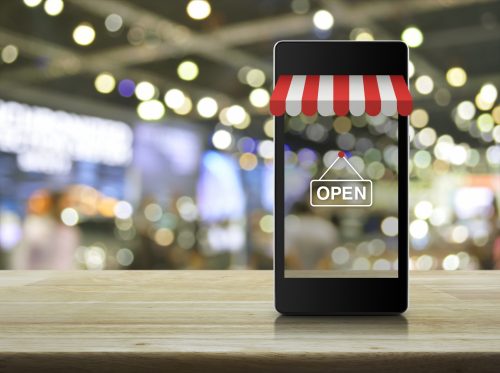
Realizing Your Omnichannel Commerce Potential
In today’s world, an omnichannel commerce experience is critical to a successful retail strategy. Implementing omnichannel commerce – the unification of brand experiences and internal systems across channels and devices – helps drive and deliver a consistent and personalized customer experience with all business components working in harmony. Engaged customers deliver retail success, and omnichannel commerce is what enables these levels of engagement.
What does omnichannel commerce look like?
Retailers engage customers through many diverse channels to drive their business. Omnichannel commerce is uniting these channels to deliver a truly seamless customer experience.
Digital and in-store experiences need to align into one unified, intuitive identity. This applies across devices as well. Responsive design, a mobile-first approach, and media queries targeting various layout breakpoints can all improve experience unity.
Omnichannel commerce is about more than web-design. Successful retailers need to unify marketing, promotions, style, branding, company vision, etc. across channels as well. The omnichannel strategy is about more than simplifying the buying journey: it is unifying every facet of your brand and business into one harmonious system.
Tools such as company brand guides can go a long way to helping define this unified identity, enabling translation across channels and platforms. Sources like Share This and Olapic can further unify these channels and introduce existing customers to new ones.
Why is omnichannel commerce important?
At the end of the day, a unified commerce experience drives customer engagement. Omnichannel commerce drives better usability, encourages customer loyalty, and that familiarity aids the sale process.
Carrying the customer experience from your retail website into the store injects new value into brick and mortar retail. Physical locations can become brand showrooms, with digital capabilities that ensure customers can order exactly what they want. Even better, customers can buy online and pick up in-store, guaranteeing foot traffic and improving the chance for incremental sales. Omnichannel commerce is a winning approach that has driven success for retailers like Best Buy, Target, Staples, and even Home Depot.
Internally, omnichannel commerce creates an environment where knowledge is shared and easily accessed. In our above examples, you’re going to need to know inventory levels in store and off site in order to process customer orders. This data may even enable you to utilize stores as local warehouses, enabling speedy delivery and elevating customer satisfaction.
Data can enable every product page of your site to inform customers about stock levels and availability at their favorite store or stores nearby. Gifting capabilities and checkout optimizations are just a few of the capabilities made possible through omnichannel strategies.
Customers crave personalization, and omnichannel enables it. Integrated order statuses inform the customer as to their order history, and trigger emails for when to order pick ups, repeats, or expected delivery. These notifications can extend across devices to create a seamless relationship between your brand and your customers.
Your customers demand a unified shopping experience. Let’s make it a seamless experience.
How to create an omnichannel experience
Various suppliers such as LYONSCG-partner Radial Omnichannel will help you start with the right tools and technology. You can keep track of individual inventory stocks by store; think of them as individual inventory lists. Generate inventory listings from your IMS and update your website daily or even hourly. Just make sure those files are deltas and you track a reset date time. You must be sure to account for online purchases against that time too. Remember, sales are generated through multiple channels in omnichannel commerce.
Another key component of omnichannel commerce is to run a real time web service call that helps you track your inventory. A quick google search can point you in the direction of various integration options available whether hosted locally or through that integrator.
In this example, we leverage ajax javascript to update the page messaging or available quantity as the customer shops. When customers move through shopping cart or checkout stages, we can make additional inventory calls to verify those products are still available to be purchased.
Omnichannel commerce brings the digital and physical environments together into one holistic shopping journey. A strategy that works in retail is utilizing guided shopping assistants. These employees carry tablets and devices to leverage the digital experience and systems in-store.
These endless aisle solutions provide customers with a level of data and personalization not seen in-store. They don’t need to walk to the register: they can order from the store stock right there on the tablet.
RESTful APIs help to facilitate integrations with apps like Pinterest, Instagram, and Shoppable that can trigger sales through your site. By partnering with your eCommerce, retail, and operations teams we can help build this seamless experience.
A unified, omnichannel commerce experience
Omnichannel commerce is the unification of physical and digital experiences. By bringing the web or mobile experience to the store level, you’re providing customers with an opportunity to deeply engage with your brand and driving sales and growth for your company. Integrating across channels and devices is a necessary bridge that retailers need to build today.
The omnichannel commerce experience transcends eCommerce: it is commerce realized.
The omnichannel commerce experience transcends eCommerce: it is commerce realized.
